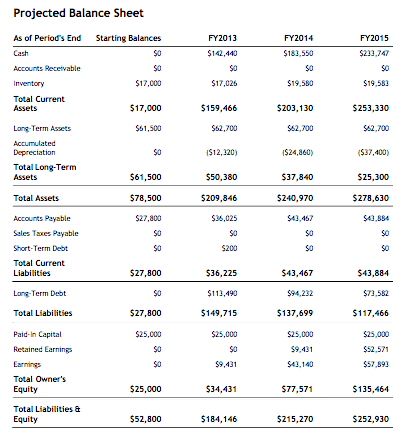
Workers can choose to voluntarily withhold payroll dollars to fund benefit plans. When the payroll liabilities display a negative amount, it is not a good thing. These two are the most reasons for a negative amount in payroll liabilities. There is a reason why all the payroll liabilities in connection to the particular amount are required to be zeroed out. Compliance adherence ensures that businesses meet legal requirements and avoid potential penalties and fines, promoting financial stability and seamless operations.
You can print payroll reports using its payroll feature and make any adjustments to the general ledger within the same software. To get started, you’ll need reports from both the general ledger and the payroll software. In payroll liabilities, the amount that we are supposed to give to our employees comprises the payroll taxes. Often it is seen that business owners around the world hold the payroll taxes from their employees.
Understanding these disparities is essential for optimizing financial and tax reporting accuracy. When comparing paying payroll liabilities in QuickBooks Online and QuickBooks Desktop, distinct differences emerge in the user interface, available payment options, and management of tax deadlines. These variations impact the overall experience and efficiency of payroll liability management. With detailed reporting capabilities, businesses can track and verify the accuracy of their tax payments, enhancing overall financial management and accountability.
Payroll processing is complex, meaning you’re likely to struggle to stay on top of the process. A very important part of managing payroll is tracking and paying payroll liabilities. Managing payroll is one of the top challenges for small business owners, according to a Justworks and The Harris Poll survey. The reporting capabilities of QuickBooks Online and QuickBooks Desktop for payroll liabilities management differ in terms of financial reporting and tax-related functionalities.
How to Set Up Payroll Liabilities in QuickBooks Online?
The first thing you need to do is make a list of all your payroll liability accounts. If you still need to set them up, use our tutorial how to calculate variable cost per unit on setting up a chart of accounts in QuickBooks. QuickBooks Online offers a cloud-based interface that allows users to access payroll features from any location with internet connectivity. With the automation of these payments, accounting teams can focus on other critical financial tasks, enhancing overall efficiency and reducing the burden of manual payment management.
Setting Up Payroll Liabilities
Accrued payroll includes liabilities a business owes for payroll but hasn’t paid yet. To streamline the process of paying payroll liabilities in QuickBooks, efficient payroll processing, meticulous tax deposit management, and proactive compliance adherence are integral. These tips enhance overall payroll management and mitigate potential tax-related issues. With QuickBooks Online, businesses can easily set up recurring payments for various payroll obligations such as wages, taxes, and benefits. This not only ensures that these payments are made on time but also simplifies the tracking and reporting process.
- It makes it easier to organize the transactions so it’s clear which amounts cleared and which did not.
- Based on the screenshot you've added, it looks like your account is not active.
- If the adjustment will impact or change the data on your quarterly return, you might consider doing a quarter-to-date adjustment instead of a year-to-date adjustment.
- Often it is seen that business owners around the world hold the payroll taxes from their employees.
- By addressing these aspects, businesses can effectively manage payroll items and ensure smooth financial operations within QuickBooks Desktop.
When reconciling payroll, many QuickBooks Payroll users are concerned with aligning their payroll records to their irs releases 2020 standard mileage rates bank statements. There are, however, important related tasks, like learning how to reconcile payroll liabilities in QuickBooks. This consists of researching outstanding payroll debts, like payroll taxes or benefit premiums, that haven’t cleared your general ledger accounts in a reasonable time frame. You may do this annually, but doing it monthly saves more time in the long run.
Step 4: Print Reports From Your QuickBooks Payroll Software & General Ledger

You might also need to print payroll cash reports or itemized invoices from your benefit vendors if the issue 990-finder requires more in-depth research. QuickBooks allows you to assign transaction labels, so you should consider identifying employee and employer funds (EE can be short for employee, and ER can represent employer contributions). This will help you organize data much faster when you need to research payroll liabilities. Keep in mind that you can create additional accounts as needed, depending on how specific your accounts need to be.
Reconcile your payroll liabilities
Implementing scheduled liabilities payments in QuickBooks Online streamlines tax reporting and compliance adherence by automating the timely allocation of funds towards payroll liabilities. This feature minimizes the risk of missed payments and facilitates accurate tax filings. For small business owners, the procedure involves accessing the ‘Pay Liabilities’ option under the ‘Employees’ tab in QuickBooks Desktop. Here, the user can select the appropriate liability to record a manual payment, enter the payment details such as check number, payment date, and amount. This ensures that all tax obligations are properly recorded and helps in reconciling the financial records. It plays a vital role in maintaining a clear audit trail for tax deposit tracking, which is crucial for financial transparency and compliance.
